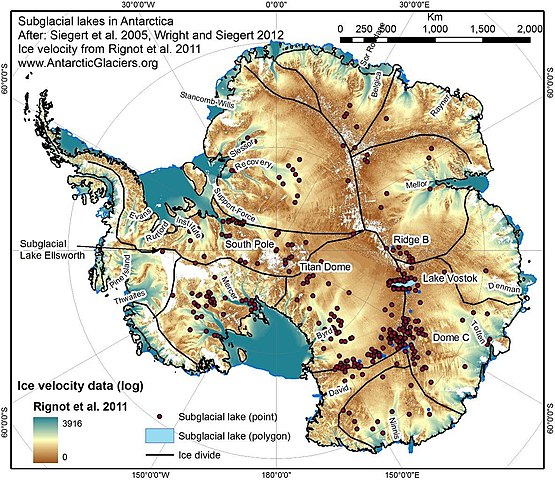 Do you know what lies under the Antarctic ice? Over 300 lakes!
Do you know what lies under the Antarctic ice? Over 300 lakes!
Scientists believe the lakes could harbor some forms of life and give us clues to the evolution of life on earth. But to figure that out, they need to reach the lakes. And that is what they have just accomplished.
Sub-glacial Lakes!
Called sub-glacial, these lakes have not seen the light of day for millions of years. Lake Vostok, named for the Russian research station it lies under, sits almost four kilometers under the ice and is the largest of these features. Probably as big and as deep as Lake Baikal in Russia or Lake Ontario in North America, Russian scientists set out to reach it early this year. But it was years and years in the planning. This lake sits under one of the most inhospitable places on earth.
Vostok lies in the East Antarctic ice sheet, which has recorded the coldest temperature ever on earth: minus 89 degrees Celsius. And Russian scientists have been working here to bore through the ice and reach their goal. Now, you might wonder two things: how these lakes stay liquid and how on earth did the scientists drill through miles of ice? Let’s explore.
Why don't they freeze?
Geothermal heat is the heat that emanates from the center of the earth (the molten core). It is a combination of this heat, and the pressure of being so deep underground, that keeps these lakes liquid.
There is a large network of water under the ice sheet. But there could be unconnected lakes too. This isolation could mean that life could exist and develop here like it did many millions of years ago on earth. This could have implications for finding life on extraterrestrial planets and bodies like Europa - Jupiter's moon. But how do you reach it, to sample it?
How do you reach the lakes?
Russian scientists have been hard at work trying to figure this out. Each time they drill, the hole would freeze over!
So they had to fill the hole with kerosene to prevent freezes. And then there was the issue of contaminating these pristine environments with drilling fluid. The scientists plugged the bottom of the drill hole with Freon (and inert fluid), which would not react with the water. They used a heated drill bit (no fluid) for the last bit, just before hitting the lake.
Then they would remove the kerosene so lake water would rush into the borehole and freeze to form a “clean” icy plug. Well, that was the plan. And it worked exactly that way!
So now, the scientists have reached the lake, prevented contamination, and plugged the hole. And all this was done just in time, for the Antarctic winter is upon them. They will return next summer to sample the water and continue experiments.






